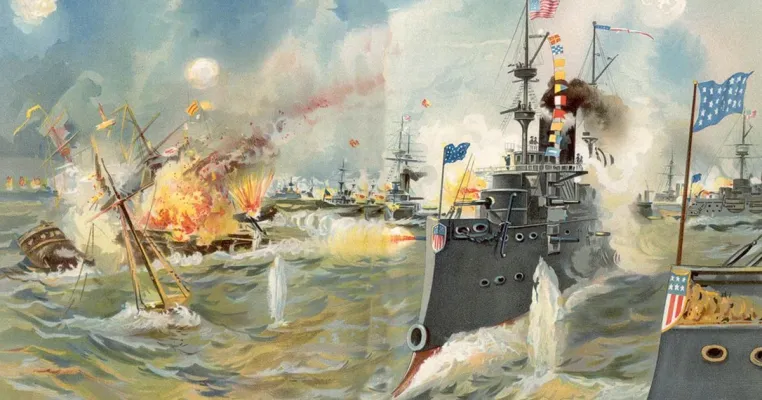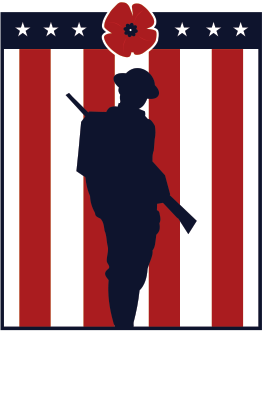Imperial Germany’s turn-of-the-century plan to invade the United States
Published: 10 August 2025
By Blake Stilwell
via the We Are The Mighty website

all-quiet-on-the-western-front-netflix
It's all quiet on the Western Front until you decide to invade Brooklyn by landing in New Jersey. (Netflix)
Long before WWI erupted, the German General Staff set to work on a plan to invade and possibly even conquer the United States
Germany invading the United States might sound crazy by today’s standards, but global power at the turn of the 20th century was very different from what it is today. The great powers of Europe were carving up Asia and Africa for imperial clout, riches, and raw materials, and sending their forces all over the world required a lot of manpower and firepower. The need for more resources meant that empires required more colonies, but space was limited; uncolonized areas were being snatched up quickly. So when colonies were established too close to competing empires, it could cause friction–friction that could lead to war.
The German army at the time was a formidable force, one that had adopted industrialization early on. To compete with the power of the British, the German Imperial Army maintained a peacetime force of nearly half a million troops. Since the empire also implemented universal conscription policies, it could muster up to two million soldiers if it wanted to, more than enough to challenge American forces on land.
Meanwhile, the U.S. was far behind, but Germany recognized its martial potential. The Americans had just reinvigorated their Navy and sailed the Great White Fleet around the world, but they maintained fewer than 99,000 active duty troops in the Army and fewer than 10,000 Marines. After all, the United States was more concerned with fighting Native tribes in the West. The Germans had a low opinion of the U.S. Army anyway, believing it was well-fed but lacked discipline. They had an even lower opinion of the Navy, questioning whether the country’s democratic ideals affected its military discipline.
The German Empire had only become a unified country in 1871, but soon boasted the world’s strongest army, a navy that rivaled Britain’s, and the third-largest colonial empire. When that empire came too close to the burgeoning overseas possessions acquired by the U.S. during the Spanish-American War, the German General Staff set to work on a plan to invade and possibly even conquer the United States. At the very least, it believed it could capture American possessions in the Caribbean.
Operation Plan I
The German attack plan was developed in three phases. Toward the end of the 19th century, Germany was ramping up its shipbuilding in an effort to compete with Britain’s mighty Royal Navy, so the original planners had naval warfare on their minds. The brilliantly named Operation Plan I called for the German fleet to draw the U.S. Navy’s Atlantic Fleet into a decisive battle at sea.
Once the American ships were defeated, the Germans would shell American shipbuilding centers (calling it “the Heart of America”) at Norfolk, Newport News, Portsmouth, and Hampton Roads with the goal of occupying all of them. After devastating their shipbuilding capabilities, the victorious German Navy would blockade the East Coast and negotiate an end to the war. Unfortunately for the Germans, they lacked the necessary number of vessels for this plan, so the general staff had to go back to the drawing board.

German Grand Adm. Alfred von Tirpitz, the architect of Imperial Germany’s U.S. invasion plan, favored a two-pronged attack in everything apparently.
Operation Plan II
The next iteration of the plan came at a time when German sea power completely outmatched that of the Americans. This time, the plan involved more than just naval tactics; they also planned for German troops to land in the United States and capture its most important cities. After the prerequisite decisive naval battle outlined in Plan I, a German armada of 60 ships would land 100,000 troops and a large number of artillery in a two-pronged attack on the Eastern Seaboard.
The first prong was to land at Cape Cod, Massachusetts, and lay siege to the city of Boston with the artillery. The second prong was more of a fast-paced, shock strategy (what might even be considered a precursor to the Germans’ “blitzkrieg” strategy to come). Imperial ships would fire on New York’s harbor fortifications, Fort Hamilton in Brooklyn, and Fort Tompkinson on Staten Island. Once they were taken out, the fleet would proceed to shell Manhattan. Concurrently, German troops would land at Sandy Hook, New Jersey, and march on the city.
→ Read the entire article on the We Are The Mighty website here:
External Web Site Notice: This page contains information directly presented from an external source. The terms and conditions of this page may not be the same as those of this website. Click here to read the full disclaimer notice for external web sites. Thank you.




